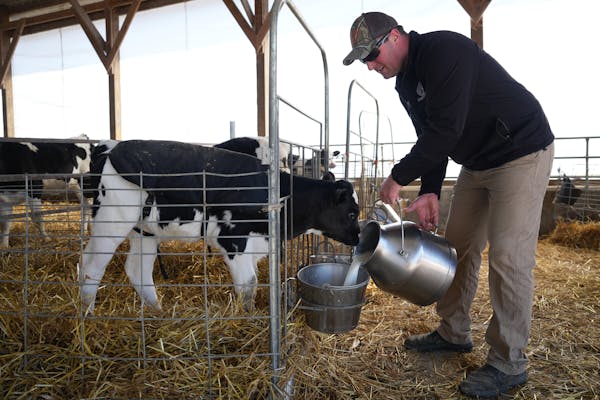Minnesota row-crop farmers' profits rose last year to the highest level in a decade as global disruptions to agricultural goods sent commodity prices soaring.
In 2022, the median profit for Minnesota farms increased 9% to $179,728 — the second-most profitable year on record, according to a statewide analysis released this week by Minnesota State and University of Minnesota Extension.
The state's growers relied on high commodity prices and smart risk management tools to successfully navigate an otherwise worrisome year last year, between extreme weather swings and a war in Europe, the report finds.
Russia's invasion of Ukraine, often called Europe's breadbasket, at the start of the year resulted in a blockage of the Black Sea's crucial shipping lanes. This triggered a surge in fertilizer and diesel prices internationally, including in the United States.
While those higher farm input costs threatened farm profitability, some farmers used the volatility to their advantage, the researchers found.
"Many Minnesota farms used risk management techniques to lock in profits by marketing their commodities and securing inputs before costs soared," Pauline Van Nurden, economist with the Center for Farm Financial Management at the University of Minnesota, said. "This will be harder to do in the coming year."
Overall, the median farm income for crop-growers in 2022 across Minnesota was $234,853. Government payments represented approximately 2% of gross farm revenue, analysts said.
The survey looked at more than 2,000 participants in Minnesota State Farm Business Management programs, along with more than 100 members of the Southwest Farm Business Management Association. The participants represented about 12% of Minnesota farmers earning more than $250,000 in gross income annually.
The war in Ukraine jolted commodity prices — especially on corn, soybeans and wheat — with some markets last May reporting over $8 a bushel on corn, rates unseen in a decade.
But the soggy weather, at least in the Upper Midwest, led to delayed planting across Minnesota's agricultural landscape. A June heat wave, plus another summer of drought, left Minnesota planters reeling.
Still, yields were up 5% on corn in 2022 and 4% on soybeans, according to the U.S. Department of Agriculture's year-end report. But sugar beets took a 10% tumble over 2021, coming in at 11.1 million tons.
This week's joint farm income analysis covers corn, soybeans, wheat and sugar beets.
Meanwhile, the story for the state's dairy, beef and hog producers was less uniformly upbeat. While earnings were up for most dairy and beef producers, profits for hog producers dropped in 2022.
The report also noted 2023 could be a year of cutbacks on the farm, as commodity prices recede but input costs — for fuel and fertilizer — remain high. A February outlook from USDA predicted an 18% decline in farm profits for the year. And uncertainty still runs high due to global conditions.
"Over the last year, machinery costs, land rent and fertilizer have all increased," said Garen Paulson, lead field staff for the University of Minnesota's Southwest Minnesota Farm Business Management Association. "These expenses don't look like they will come down as fast as commodity prices are expected to fall this year."
